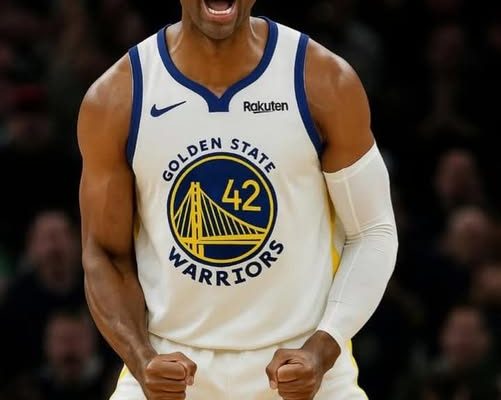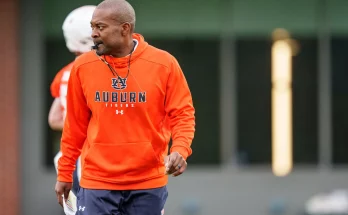Al Horford’s Golden State Deal Hinges on Player Option as Warriors Wait on Jonathan Kuminga’s Next Move
The Golden State Warriors are reportedly poised to bring veteran big man Al Horford into their fold, but his signing may not be a straightforward process. According to NBA insider Jake Fischer, Horford is expected to sign with the Warriors on a deal that includes a player option—a clause that gives Horford control over his future after the first year. However, both Horford and the Warriors appear to be holding off finalizing the agreement until they get more clarity on the status of Jonathan Kuminga, the young forward whose role and contract situation could directly impact Golden State’s roster decisions.
This twist in Horford’s free agency saga sheds light on the complex roster balancing act that the Warriors are undertaking as they seek to build a championship-contending team while managing salary cap space and playing time distribution. It also highlights the strategic nature of NBA contract negotiations, where player options and pending decisions by other players create a domino effect that can shape the entire offseason.
Al Horford, a seasoned NBA veteran with a long history of playoff success, brings a skill set that perfectly complements Golden State’s core. His ability to stretch the floor with reliable shooting, guard multiple positions, and provide calm leadership makes him a valuable asset for a team that thrives on spacing and versatility. At 37, Horford may not be the athletic force he once was, but his basketball IQ and adaptability allow him to remain effective even as his physical skills gradually decline.
The reported inclusion of a player option in Horford’s contract is a smart move for both parties. For Horford, it provides flexibility—he can evaluate his performance and the team’s direction after the first year and decide whether to opt out or continue for a second season. For the Warriors, it offers a low-risk way to add veteran depth without being locked into a long-term commitment. This kind of deal is ideal for a team in transition or one managing a mix of veterans and emerging young talent.
The sticking point appears to be Jonathan Kuminga’s situation. Kuminga, a high-upside forward still on his rookie contract, is entering a crucial phase of his career where playing time and role are significant considerations. If Kuminga remains a primary piece of Golden State’s rotation, the team will need to carefully integrate Horford in a way that maximizes both players’ strengths. Conversely, if Kuminga’s status changes—whether through trade, contract renegotiation, or role adjustment—the Warriors may have more roster flexibility to finalize Horford’s deal without worrying about redundancy or overcrowding.
This waiting game signals that the Warriors are meticulously weighing their options. They want Horford’s veteran presence and skill set, but not at the expense of stifling the development of their younger stars. It’s a delicate balance between maintaining a winning culture with experienced players and investing in the future through youthful potential.
For Horford, the player option also acts as a safeguard. After a long and successful career, he’s earned the right to evaluate his own trajectory. Should the Warriors’ roster or strategy shift in a way that doesn’t align with his goals, or if he feels his role might diminish, he can choose to explore other opportunities the following offseason. On the flip side, if the fit is ideal, and the Warriors remain serious contenders, Horford can comfortably commit to a second year.
The timing of this situation is critical. As the offseason progresses and teams begin to finalize rosters and make trades, uncertainty around Kuminga could prolong the decision on Horford’s contract. However, it also offers an opportunity for Golden State to be flexible and responsive to changing circumstances, potentially reshaping their roster to best position themselves for the 2025 season.
Golden State’s interest in Horford underscores their continued commitment to blending experience with youth. The Warriors have been a model franchise for over a decade, balancing the dominance of their core stars—Stephen Curry, Klay Thompson, and Draymond Green—with smart additions that fill gaps and provide strategic advantages. Horford fits this mold perfectly. His veteran savvy, playoff experience, and ability to mentor younger players make him an ideal locker room presence.
From a basketball standpoint, Horford offers multiple tactical benefits. His ability to defend multiple positions allows the Warriors to employ versatile lineups that can switch seamlessly on defense, a hallmark of Steve Kerr’s coaching style. Offensively, Horford’s ability to space the floor with mid-range and three-point shooting opens lanes for Curry and Thompson to operate. His passing out of the post also helps maintain the Warriors’ ball movement and offensive flow.
Jonathan Kuminga, meanwhile, represents the future. His athleticism, length, and emerging offensive game have made him a key figure in Golden State’s rebuilding and evolution. The team’s front office and coaching staff are clearly invested in his development, but how they balance his role with the influx of veteran players like Horford remains an open question. If the Warriors can find a way to maximize both players’ strengths without compromising either’s growth or contribution, it could be a win-win scenario.
The reported scenario also highlights a larger trend in the NBA—teams increasingly rely on flexible contracts and player options to manage rosters in an unpredictable market. The salary cap landscape is more complex than ever, and player options allow both teams and players to adjust as circumstances evolve, be it injuries, performance shifts, or changes in team composition.
Golden State’s cautious approach shows they’re being strategic, not rushed. While Horford’s signing is expected, they are ensuring the fit is right and that they are not committing to something that could hamper their long-term goals. This kind of patience is typical of successful franchises that plan for sustained success rather than quick fixes.
For Horford, the Warriors’ situation is also attractive. Joining a team with championship pedigree and a culture that values intelligent, team-first basketball is ideal for a veteran looking to extend his career meaningfully. The player option gives him peace of mind and control, which is especially valuable for players late in their careers.
As the offseason unfolds, all eyes will be on how the Kuminga situation resolves and what that means for Horford’s future. The Warriors’ front office will be monitoring closely, ready to finalize the deal once the path is clear. It’s a delicate dance that balances roster construction, salary considerations, player development, and championship aspirations.
If Horford signs with Golden State, it will mark another chapter in his storied career and provide the Warriors with a seasoned, savvy player who can contribute both on and off the court. The move could bolster their depth, versatility, and leadership as they look to compete in a stacked Western Conference.
The player option gives Horford the freedom to assess his fit with the team after one year, while also allowing Golden State to remain flexible with their roster moving forward. This kind of mutual arrangement benefits both parties and reflects the modern NBA’s evolving contract landscape.
Golden State Warriors fans can be hopeful that the team’s patient, methodical approach will pay dividends, and that adding Horford’s veteran presence will help guide the team through another deep playoff run. Meanwhile, the ongoing Kuminga decision adds an intriguing subplot to the offseason narrative, highlighting how interconnected player decisions can be in today’s NBA.
In conclusion, Al Horford’s next move is tied not just to his own career choices, but also to the fate of Jonathan Kuminga within the Warriors organization. The player option in Horford’s expected contract gives both sides flexibility and control. It ensures that the Warriors can adapt to evolving roster needs while giving Horford the power to decide his own future. This cautious but strategic approach exemplifies how the Warriors continue to build for sustained success and adapt to the challenges of the modern NBA.
The 2025 NBA season promises to be exciting, and how Golden State manages these key roster decisions could be a defining factor in their quest to stay at the top of the league. Whether it’s through savvy veteran signings like Horford or nurturing young talent like Kuminga, the Warriors are clearly focused on maintaining their elite status and competing for championships in the years to come.



